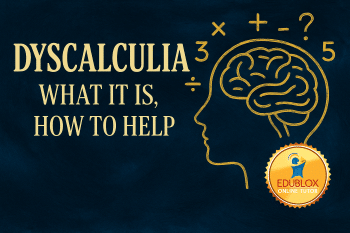
Table of contents:
- Overview
- Symptoms and signs
- Causes and risk factors
- Diagnosis and testing
- Treatment and prognosis
- Dyscalculia in adults
- Dyscalculia and math anxiety
- Classroom and home strategies
- Key takeaways (video)
- Talk to a specialist
.
1. Overview
What is dyscalculia?
Dyscalculia is a specific learning disability that affects a person’s ability to understand and work with numbers. It’s sometimes called “math dyslexia,” but this nickname oversimplifies the condition. Dyscalculia involves more than just being bad at math — it reflects deep, persistent difficulties with number sense, calculation, and problem-solving that don’t improve with typical instruction.
For example, a student with dyscalculia may struggle with basic facts, such as 7 + 2 or 5 × 3, even after repeated practice. They may not understand that 8 is larger than 5 or fail to grasp what “twice as many” means in real-world contexts.
Types of dyscalculia
The primary categories of dyscalculia encompass both developmental and acquired dyscalculia.
- Developmental dyscalculia is present from early childhood. It affects a child’s ability to acquire math skills despite having normal intelligence and access to educational opportunities.
- Acalculia (acquired dyscalculia) occurs after brain injury, stroke, or trauma. It can affect adults or children who previously had normal math abilities.
These challenges are not due to poor teaching, low motivation, or lack of effort. Children with dyscalculia are often intelligent and capable in other areas; they benefit from specialized support to develop their mathematical understanding.
👉 👉 See our detailed guide on dyscalculia types.
What is the difference between dyscalculia and dyslexia?
Although both are classified as specific learning disorders, dyscalculia and dyslexia affect different domains of learning. Here is a quick comparison of how dyscalculia and dyslexia differ:
| Dyscalculia | Dyslexia |
|---|---|
| Affects number sense and math skills | Affects reading and language |
| Trouble with arithmetic and patterns | Trouble with decoding and spelling |
| May co-occur with dyslexia or ADHD | May co-occur with dyscalculia |
Many children experience both, but they require different types of interventions.
👉 👉 See our detailed guide on how dyscalculia and dyslexia overlap and differ.
How common is dyscalculia?
Estimates of the prevalence of dyscalculia can vary depending on how it is defined and assessed. Most researchers agree that it affects between 3% and 7% of the population — about the same prevalence as dyslexia. However, dyscalculia is much less well-known and far less frequently diagnosed (Shalev, 2007; Haberstroh & Schulte-Körne, 2019).
Some experts argue that many students labeled as “bad at math” may have an undiagnosed learning disability. Others point out that the actual rate of genuine dyscalculia (those not helped by regular support) is less than 2% (Peard, 2010).
2. Symptoms and signs
What are the signs of dyscalculia?
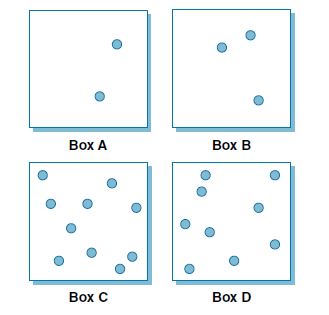
Dyscalculia affects each person differently, but the most consistent symptoms include:
- Poor number sense — difficulty grasping the meaning and size of numbers
- Difficulty subitizing — unable to instantly recognize small quantities without counting
- Difficulty learning and recalling basic math facts (like 7 + 2 or 4 × 3)
- Trouble understanding quantities, number lines, and place value
- Immature strategies, such as finger-counting well beyond the expected age
- Slow, error-prone calculation, even with simple tasks
- Difficulty estimating (length, time, cost, quantity)
- Trouble understanding mathematical symbols and word problems
- Frequent frustration, shutdown, or emotional distress during math
These symptoms often persist despite adequate teaching and practice. They can vary with age and are sometimes masked by coping strategies, such as rote memorization.
Dyscalculia symptom checklist for parents and teachers
| Possible Signs of Dyscalculia | ✔️ |
|---|---|
| Has poor number sense — does not grasp how big numbers are or how they relate | ☐ |
| Cannot identify small quantities without counting, e.g., cannot ‘see’ that 3 dots = 3 (a skill called subitizing) | ☐ |
| Mixes up math symbols or steps in multi-step problems | ☐ |
| Needs repeated re-teaching of previously learned content | ☐ |
| Uses fingers to add single-digit numbers beyond age eight | ☐ |
| Avoids games or tasks involving numbers | ☐ |
| Panics, freezes, or shuts down during math tests or timed activities | ☐ |
Dyscalculia symptoms by age
Toddlers and preschoolers
- Difficulty learning to count in order
- Trouble sorting objects by size or shape
- Struggles with quantity concepts like “more” or “less”
- Cannot match numbers to sets of objects
- Weak auditory memory for numbers
Kindergarten
- Cannot reliably count to 20 or higher
- Difficulty recognizing written numbers
- Struggles with simple number comparisons (e.g., “Which is more: 5 or 8?”)
- Cannot identify small quantities without counting (e.g., cannot “see” that 3 dots = 3)
Early elementary (1st–3rd grades)
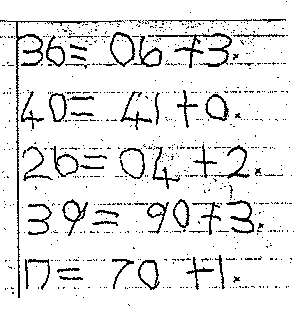
- Trouble memorizing basic math facts (e.g., 2 + 4, 3 × 5)
- Difficulty understanding the concepts of addition, subtraction, etc.
- Over-reliance on finger counting for basic sums
- Poor sense of magnitude and place value
- High anxiety or avoidance during math lessons
.
Late elementary to middle school (4th–7th grades)
- Struggles with multi-step math problems
- Difficulty telling time on an analog clock
- Problems with math vocabulary (e.g., “difference,” “multiply,” “more than”)
- Difficulty applying math in real-world situations (e.g., making change)
- Needs constant re-teaching of previously learned content
- Cannot estimate measurements or distances
High school
- Ongoing trouble with fractions, percentages, and ratios
- Struggles to understand graphs, charts, or formulas
- Difficulty with spatial and geometric reasoning
- Problems with time management and estimating task durations
- Confusion with formulas in algebra or geometry
- Struggles with budgeting, estimating costs, and mental math
- May feel hopeless, anxious, or embarrassed during math activities
👉 👉 See our detailed guide on the symptoms of dyscalculia.
3. Causes and risk factors
Dyscalculia is not caused by laziness, poor teaching, or lack of effort. Like dyslexia, it is a neurodevelopmental disorder — meaning it originates in the way the brain develops and processes information. Several overlapping factors may contribute:
Genetics and heredity
Dyscalculia tends to run in families, suggesting a strong genetic component.
- If one identical twin has dyscalculia, there is a 58% chance the other will too. For non-identical twins, the risk is about 39%.
- Many children with dyscalculia have a parent or sibling who also struggles with math.
Brain differences
Neuroimaging studies have identified structural and functional differences in the brains of individuals with dyscalculia:
- Right parietal lobe abnormalities: This region is closely involved in number processing and quantity estimation (Kadosh et al., 2007).
- Reduced gray and white matter in number-related areas (McCaskey et al., 2020).
- Differences in activation patterns (how brain regions light up during tasks) when solving even simple math problems.
These findings suggest that dyscalculia is related to how the brain represents a numerical magnitude and performs basic calculations.
Cognitive processing weaknesses
Dyscalculia often reflects difficulties in multiple cognitive domains, including:
| Cognitive Skill | What It Means |
|---|---|
| Attention and inhibition control | Focusing on relevant information while ignoring distractions or resisting impulses. |
| Visual processing | Making sense of what the eyes see — shapes, symbols, directions, or patterns. |
| Working memory | Holding and using information in real time — like solving a multi-step problem. |
| Visual-sequential memory | Remembering visual information in the correct order (e.g., numbers or steps). |
| Visual-spatial memory | Remembering the layout or position of things — useful for columns, graphs, and space. |
While some researchers argue that dyscalculia arises from specific deficits in number processing (Landerl et al., 2004), others emphasize broader cognitive dysfunctions (Szűcs et al., 2013; Chutko et al., 2023).
This debate has led to the understanding that dyscalculia is multifactorial: in most cases, it reflects a combination of number-specific and domain-general cognitive weaknesses.
👉 👉 See our detailed guide on the causes of dyscalculia.
Co-occurring conditions
Dyscalculia is often part of a broader learning profile and can occur alongside:
| Condition | What It Means |
|---|---|
| Dyslexia | A learning difficulty that affects reading and spelling, especially decoding words and connecting letters to sounds. |
| Dysgraphia | A writing difficulty that affects handwriting, spelling, and written expression, often linked to visual memory and motor control. |
| ADHD | Attention-deficit/hyperactivity disorder affects focus, impulse control, and organization, often making it harder to follow steps in math. |
| Autism spectrum disorder (ASD) | A developmental condition that affects social interaction and communication, and often includes sensory or cognitive differences. |
| Developmental coordination disorder (DCD) | A motor skills disorder that affects balance, coordination, and fine motor tasks like writing or using tools. |
This overlap is known as comorbidity. Studies estimate that between 20% and 60% of individuals with dyscalculia also have one or more other learning or developmental disorders. Shared genetic and neurobiological factors likely contribute to this overlap, as well as common cognitive weaknesses, particularly in areas such as visual processing and visual memory.
Environmental and situational risk factors
Although dyscalculia is primarily neurodevelopmental, some risk factors may contribute to its severity or complicate diagnosis:
- Early deprivation or low-quality instruction
- Emotional trauma related to math (e.g., repeated failure, humiliation)
- Negative attitudes toward math at home or school
- Limited exposure to math vocabulary or games in early childhood
These do not cause dyscalculia, but they can intensify symptoms or mimic dyscalculia.
4. Diagnosis and testing
How is dyscalculia diagnosed?
Diagnosing dyscalculia is not as simple as taking a single test. It requires a comprehensive evaluation by a psychologist, educational specialist, or learning support team. The goal is to determine whether a student’s math difficulties are due to a specific learning disorder — and not something else, like poor instruction, attention difficulties, or general academic delay.
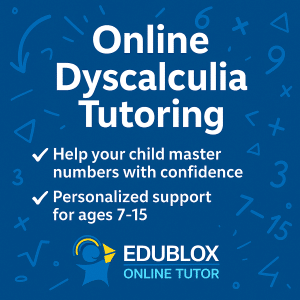
The process typically includes:
- An intelligence test (e.g., the WISC-V) to assess general cognitive functioning
- Academic achievement tests to measure skills in math, reading, and writing
- Math-specific assessments to pinpoint strengths and weaknesses
- Working memory, visual processing, and attention tests
- Background information from parents and teachers
- Review of the student’s school history and learning environment
.
To meet the criteria for a diagnosis, the math difficulties must:
- Persist for at least six months, even after targeted support has been provided
- Significantly interfere with academic achievement or everyday functioning
- Be specific and not better explained by intellectual disability, sensory impairment, or inadequate instruction.
These criteria are outlined in the DSM-5 under “Specific Learning Disorder with Impairment in Mathematics.”
What tests are used?
While different professionals may use different tools, a typical dyscalculia assessment might include:
| Test Type | What It Measures |
|---|---|
| IQ test (e.g., WISC-V) | General intellectual functioning |
| Math computation tests | Accuracy and speed with arithmetic |
| Math fluency | Timed recall of math facts |
| Quantitative reasoning | Ability to solve real-world math problems |
| Working memory assessments | Capacity to hold and manipulate number-related information |
| Visual processing tasks | Ability to interpret, remember, or reproduce visual information |
These tests help determine whether the student has a specific math-related disability or if their difficulties are part of a broader learning profile, such as ADHD, dyslexia, or slow processing speed.
Who initiates the process?
Often, it begins with a teacher’s observations — noticing that a student is falling behind in math despite making an effort and receiving support. The school may then recommend:
- Informal screening
- Formal educational assessment
- Referral to an educational psychologist
Parents can also initiate the process if they are concerned. In some regions, they may request a formal evaluation through the school system or a private practitioner.
Why is a thorough assessment important?
Math difficulties can stem from many causes — anxiety, poor instruction, gaps in foundational learning, or broader cognitive challenges. A proper evaluation ensures that the root cause is identified and that support is tailored to the child’s unique needs.
It also helps rule out other factors that might mimic or mask true dyscalculia, such as hearing or vision problems, emotional stress, or global developmental delays.
5. Treatment and prognosis

Can dyscalculia be treated?
Dyscalculia is not something a child “grows out of,” but with the proper support, students can learn to manage their difficulties and build solid math skills. There is no medication for dyscalculia. The most effective treatment is educational intervention tailored to the child’s specific learning profile.
The earlier the intervention starts, the better. Without support, students may fall further behind each year — a phenomenon known as the Matthew Effect, where the “math-rich” get richer and the “math-poor” get poorer.
What kind of help works?
Effective intervention for dyscalculia typically includes:
- Instruction in small groups or one-on-one, tailored to the learner’s pace
- Explicit, step-by-step instruction in math concepts
- Concrete and visual tools, such as number lines, manipulatives, and diagrams
- Systematic review and repetition, especially for number facts and procedures
- Spaced and cumulative practice to support retention over time
- Integration of cognitive skill training, especially in areas like visual processing, sequencing, and memory
- Progress monitoring to adjust teaching as the student improves
How long does treatment take?
There is no fixed timeline. Some students respond well after a few months of targeted support. Others may need longer-term, consistent intervention, especially if dyscalculia co-occurs with other learning difficulties.
Progress tends to be gradual, but with the right approach, it can be steady and measurable.
The role of cognitive training
While traditional tutoring focuses on math content, cognitive training focuses on the underlying skills needed for math success — such as memory, attention, processing speed, and sequencing. For students with dyscalculia, these skills often require strengthening.
Some intervention programs combine cognitive development with structured math teaching. This dual approach can be especially effective for students with persistent math difficulties.
What happens if dyscalculia is left untreated?
When left untreated, dyscalculia can impact more than just math class. Students may:
- Develop severe math anxiety or phobia
- Struggle with everyday tasks involving numbers, from telling time to handling money
- Avoid or refuse to do homework, giving up easily
- Avoid STEM-related school subjects or careers
- Experience low academic self-esteem and reduced confidence in other areas
The emotional toll can be significant. In a study by Bevan and Butterworth (2007), children with dyscalculia described feeling “stupid,” “horrible,” and left out of classroom activities.
Hope through intervention
The good news? Dyscalculia is treatable, especially when identified early and supported consistently. With the right kind of help, your child can thrive in math — not by memorizing shortcuts, but by developing real understanding and confidence. The earlier the support, the brighter the path forward.
👉 👉 See our detailed guide on dyscalculia treatment.
6. Dyscalculia in adults
Dyscalculia does not disappear with age. Many adults live with the consequences of undiagnosed or untreated math difficulties — struggling with tasks that others take for granted.
Typical signs in adulthood include:
- Trouble budgeting, estimating costs, or calculating tips
- Difficulty reading timetables or interpreting data from graphs
- Problems with scheduling, time management, or following directions
- Avoiding tasks that involve math, even basic ones
- Feeling embarrassed, anxious, or helpless when faced with numbers
Some adults develop coping strategies or avoid math entirely. Others feel frustrated that their difficulties were never understood.
The good news? It is never too late to get help. Adults can benefit from targeted learning support, cognitive training, and even digital tools designed to strengthen number sense.
Recognizing the problem is the first step — and many adults find that naming their struggle brings immense relief.
7. Dyscalculia and math anxiety
What is math anxiety?
Math anxiety is a strong emotional reaction — often fear, dread, panic, and physical symptoms like headaches or stomachaches — that arises when someone is faced with numbers, calculations, or math-related tasks. It is not the same as simply disliking math. Math anxiety can interfere with thinking, cloud judgment, and even trigger physical symptoms like sweating, racing thoughts, or nausea.
For students with dyscalculia, math anxiety is widespread. When math does not make sense — no matter how hard they try — anxiety can build with each failure, test, or classroom moment involving numbers.
How math anxiety affects learning
Math anxiety does not just make students feel uncomfortable — it directly interferes with brain function:
- It disrupts working memory, making it harder to hold and manipulate numbers
- It lowers performance during tests and tasks, even when the student knows the material
- It can trigger avoidance, leading to less practice and widening skill gaps
- It creates a self-reinforcing loop: anxiety → poor performance → more anxiety
Rubinsten and Tannock (2010) found that this anxiety-related interference is especially pronounced in students with math-based learning difficulties like dyscalculia.
Breaking the cycle
Fortunately, math anxiety can be addressed. Effective strategies include:
- Emotionally safe learning environments where mistakes are treated as part of learning
- Small, achievable steps that build confidence
- Teaching tools like visual aids, routines, and scaffolds to reduce overwhelm
- Cognitive training to strengthen memory and processing, improving confidence
- Positive reinforcement and focus on progress, not perfection
By reducing anxiety and strengthening the underlying skills, we give students the space to re-engage with math — not with fear, but with confidence.
8. Classroom and home strategies
Children with dyscalculia benefit most from a structured, consistent, and compassionate approach to math — both in the classroom and at home. The goal is not just to improve their math skills but also to rebuild confidence and reduce the fear associated with numbers.
Below are practical strategies that teachers and parents can use to support learning.
In the classroom
| Strategy | Why It Helps |
|---|---|
| Use concrete and visual supports | Tools like number lines, base-ten blocks, and diagrams make abstract concepts easier to understand. |
| Break problems into small steps | Reduces cognitive overload and allows students to focus on one part at a time. |
| Give extra time for math tasks | Helps students work through problems without the added pressure of a clock. |
| Allow the use of reference aids (e.g., charts, calculators) | Supports independence while reducing memory strain. |
| Avoid putting students on the spot | Reduces anxiety and allows them to think before responding. |
| Review key concepts regularly | Builds long-term retention through repetition and spaced review. |
| Pair verbal instruction with visuals | Reinforces understanding through multiple input channels. |
| Focus on strategies, not just answers | Encourages logical thinking and values the process, not just correctness. |
At home
| Strategy | Why It Helps |
|---|---|
| Play math-related games (e.g., dice, card, or board games) | Builds number sense and confidence in a fun, low-pressure way. |
| Use everyday situations (e.g., cooking, shopping, telling time) | Makes math meaningful and helps children apply skills in real life. |
| Stay patient and encouraging | Reassures the child that effort matters more than speed or perfection. |
| Avoid comparing with siblings or classmates | Protects self-esteem and focuses on individual progress. |
| Break homework into chunks | Makes tasks feel manageable and avoids overwhelm. |
| Celebrate small wins | Builds motivation and helps the child see their own growth. |
| Communicate regularly with teachers or tutors | Ensures consistent support and early identification of problems. |
The power of encouragement
Whether at school or home, one of the most powerful tools is simple: believing in the child. A student who feels supported, understood, and safe is more likely to persevere — even when math is hard.
9. Key takeaways
Here is a quick video summary of this article:
10. Talk to a specialist
If you suspect your child may have dyscalculia, do not wait. Getting the right help early can change the trajectory of their academic confidence and future.
Edublox offers cognitive training and live online tutoring to students with dyscalculia, including those with mild, moderate, or severe cases. Our programs go beyond traditional tutoring to target the root learning challenges behind math struggles.
We support families across the United States, Canada, Australia, and beyond.
Book a free consultation
Let’s talk about your child’s needs — and how we can help.
Authored by Sue du Plessis (B.A. Hons Psychology; B.D.), a dyscalculia specialist with 30+ years of experience in learning disabilities. Medically reviewed by Dr. Zelda Strydom (MBChB).
References:
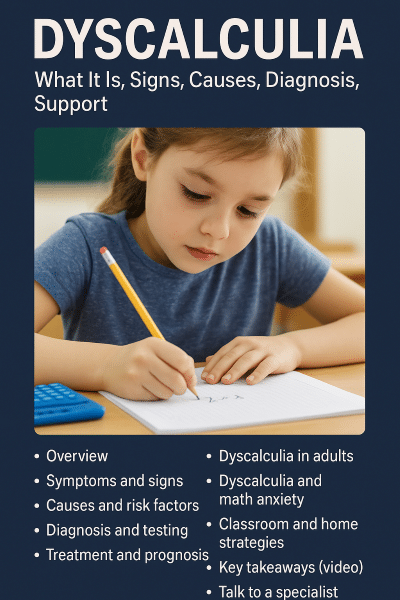
- Ardila, A., & Rosselli, M. (2002). Acalculia and dyscalculia. Neuropsychology Review, 12:179–231.
- Bevan, A., & Butterworth, B. (2002). The responses of students and teachers to math disabilities in the classroom. Institute of Cognitive Neuroscience, University College London.
- Chutko, L. S., Yakovenko, E. A., Surushkina, S. Y., Anisimova, T. I., & Cherednichenko, D. V. (2023). Cognitive disorders in children with dyscalculia. National Library of Medicine.
- Haberstroh, S., & Schulte-Körne, G. (2019). The diagnosis and treatment of dyscalculia. Deutsches Ärzteblatt International, 116(7):107-114.
- Hornigold, J. (2015). Dyscalculia pocketbook. Alresford, Hampshire: Teachers’ Pocketbooks.
- Kadosh, R. C., Kadosh, K. C., Schuhmann, T., Kaas, A., Goebel, R., Henik, A., & Sack, A. T. (2007). Virtual dyscalculia induced by parietal-lobe TMS impairs automatic magnitude processing. Current Biology, 17(8):689–93.
- Landerl, K., Bevan, A., & Butterworth, B. (2004). Developmental dyscalculia and basic numerical capacities: A study of 8-9-year-old students. Cognition, 93(2):99-125.
- McCaskey, U., Von Aster, M., O’Gorman, R., & Kucian, K. (2020). Persistent differences in brain structure in developmental dyscalculia: A longitudinal morphometry study. Frontiers in Human Neuroscience, 14.
- Peard, R. (2010). Dyscalculia: What is its prevalence? Research evidence from case studies. Procedia – Social and Behavioral Sciences, 8:106–13.
- Rubinsten, O., & Tannock, R. (2010). Mathematics anxiety in children with developmental dyscalculia. Behavioral and Brain Functions, 6.
- Shalev, R. S. (2007). Prevalence of developmental dyscalculia. In D. B. Berch & M. M. M. Mazzocco (Eds.), Why is math so hard for some children? The nature and origins of mathematical learning difficulties and disabilities (pp. 49–60). Paul H. Brookes Publishing Co.
- Sousa, D. A. (2015). How the brain learns mathematics (2nd ed.). Corwin.
- Szűcs, D., Devine, A., Soltesz, F., Nobes, A., & Gabriel, F. (2013). Developmental dyscalculia is related to visuo-spatial memory and inhibition impairment. Cortex, 49(10):2674-88.


